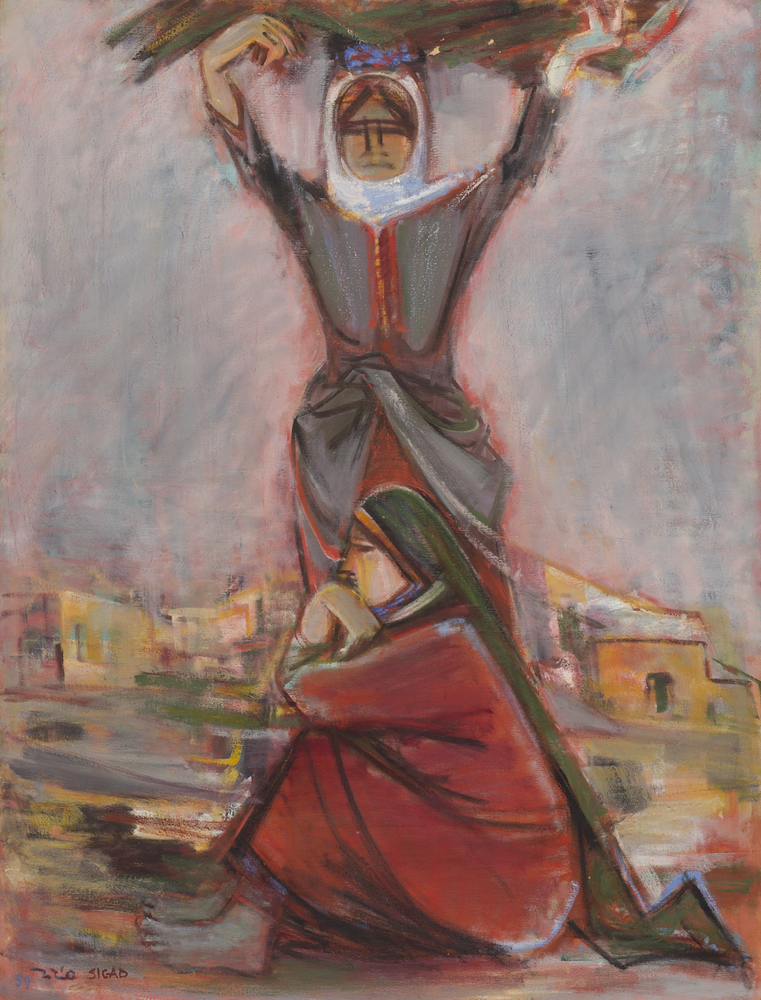


Kaparot; Oil on Canvas, 94×121 cm
Eliyahu Sigad
Eliyahu Sigad was born in 1901 in Ponevezh, Lithuania. He studied architecture and drawing at the Riga Art Academy. In 1925, during the 4th Aliya, he immigrated to Palestine as a pioneer. At first, he worked as a house painter; he painted the Herzliya Hebrew Gymnasium, Beit Ussishkin Museum and various theatre sets. Afterwards, he began working as an architect. Only after his encounter with the Tel Aviv culture scene – its writers, artists and theatre personas – he began to paint. Between 1929-1932 Sigad traveled to Paris in order to study art. Upon his return, in 1935, the Painters and Sculptors Association was established in Palestine and he became a member of its committee.
Most of his works portray mundane reality – characters he had known placed against different backgrounds of local landscapes or the streets of Tel Aviv. His paintings evoke a nostalgic sensation, a longing for the past. He was twice the winner of the Dizengoff Award: in 1945 and in 1946. However, when conceptual art became immensely popular in Israel, his works were pushed away to the margins of the Israeli art field.